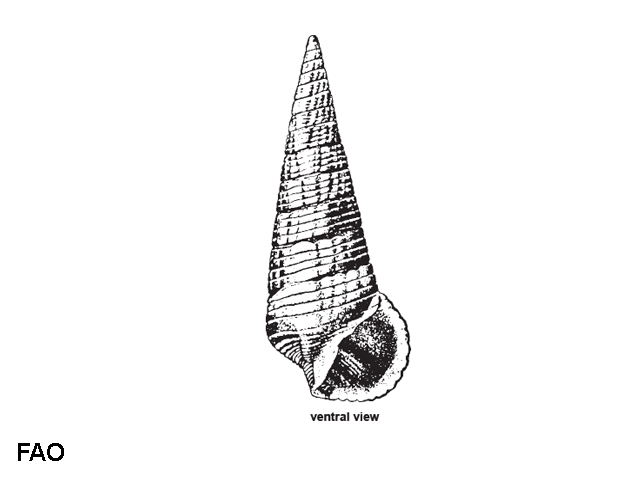| Potamididae (swamp-ceriths and horn shells) |
| 19 cm SHL (male/unsexed) |
|
benthic; brackish; marine |
| Indo-West Pacific: from East Africa, to Melanesia; north to the Philippines and south to southern Queensland and New Caledonia. |
|
|
| Extensively collected for food in many places of its distribution (Ref. 349). Abundant and conspicuous generally in brackish-water areas of the Indo-West Pacific (Ref. 349). Found on coastal mud flats (Ref. 799). Intertidal on the surface of mud in mangroves (Refs. 801, 102838) and soft water logged soil (Ref. 801). Members of the family Potamididae feed on algae and detritus (Ref. 349). |
|
Not Evaluated (N.E.) Ref. 123251)
|
| harmless |
|
Source and more info: www.sealifebase.org. For personal, classroom, and other internal use only. Not for publication.

